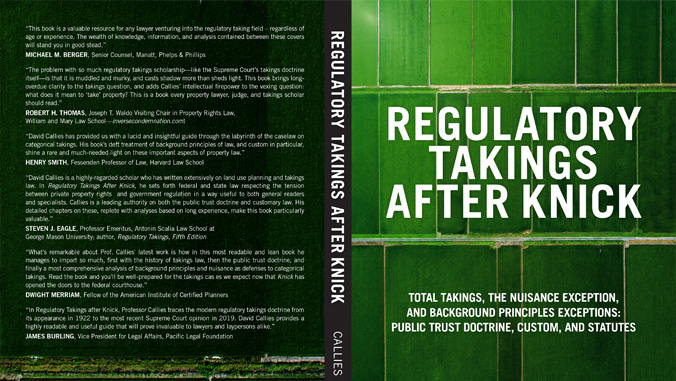
Takings law allows governments to take property from private owners for a public use, as long as the property owners are adequately compensated. The law is embodied in the Fifth Amendment. Through judicial interpretations over many years, the issue has become decidedly complex.
A new book published by University of Hawaiʻi at Mānoa William S. Richardson School of Law Professor David Callies, an authority on property law, offers an overview of recent legal changes regarding when government entities take private property for public use by regulation.

In the wake of the U.S. Supreme Court’s ‘Knick’ decision that enables property owners to sue in federal court without first pursuing legal challenges in state court, property owners now have far more latitude in their ‘takings’ law claims. Callies’ book explores the decision in Knick v. Township of Scott (2019) and explains what it means for regulatory takings law.
His book Regulatory Takings after Knick: Total Takings, the Nuisance Exception, and Background Principles Exceptions: Public Trust Doctrine, Custom, and Statutes, published by the American Bar Association, provides a summary of takings law. It also offers a thorough explanation of both customary law and the Public Trust Doctrine in real estate law, that allows the government to prevent any economic use of private land if it is subject to the doctrine or a customary use.
The U.S. Supreme Court decision involved a woman fighting her small Pennsylvania town for its attempt to allow public use, during daylight hours, of an area of her farm that was the site of a small cemetery.
UH law school Dean Avi Soifer noted that Callies has taught property law to at least a generation of UH law students, including J. David Breemer ’01, who successfully argued Knick in the U.S. Supreme Court on behalf of the Pacific Legal Foundation.
For more see the UH law school’s website.
–By Beverly Creamer

